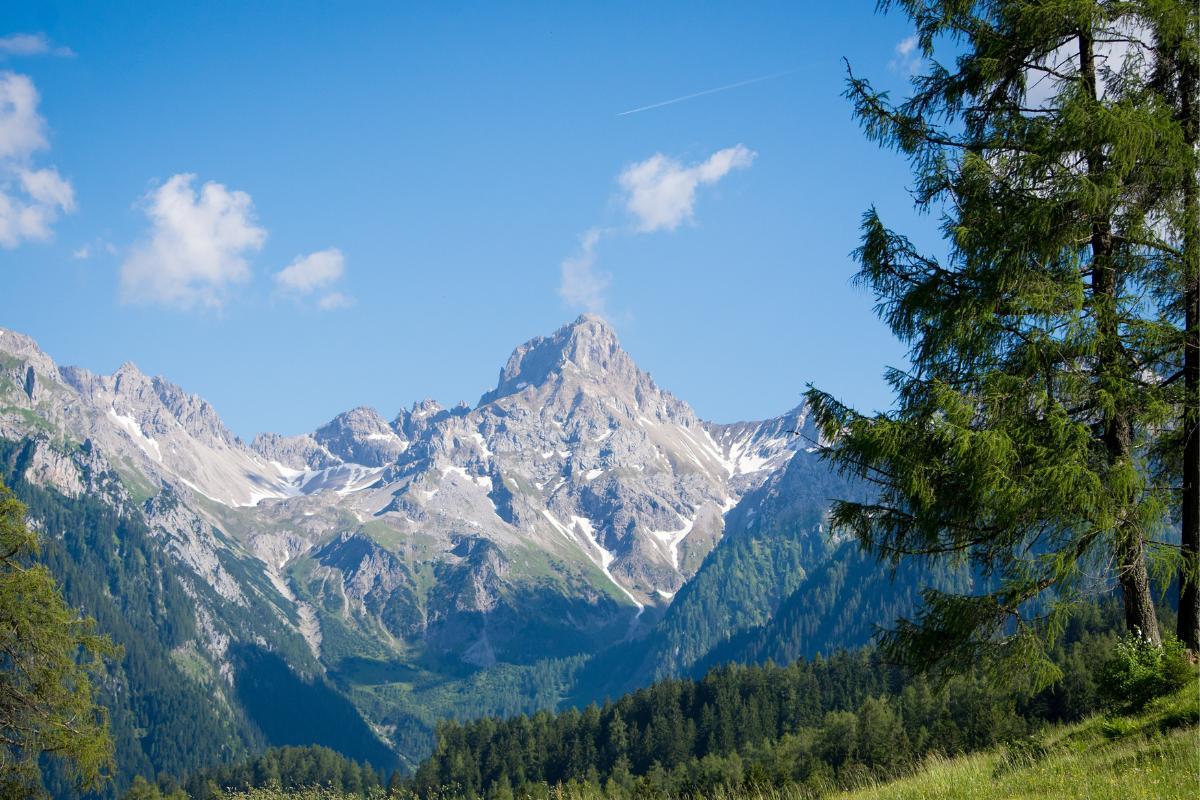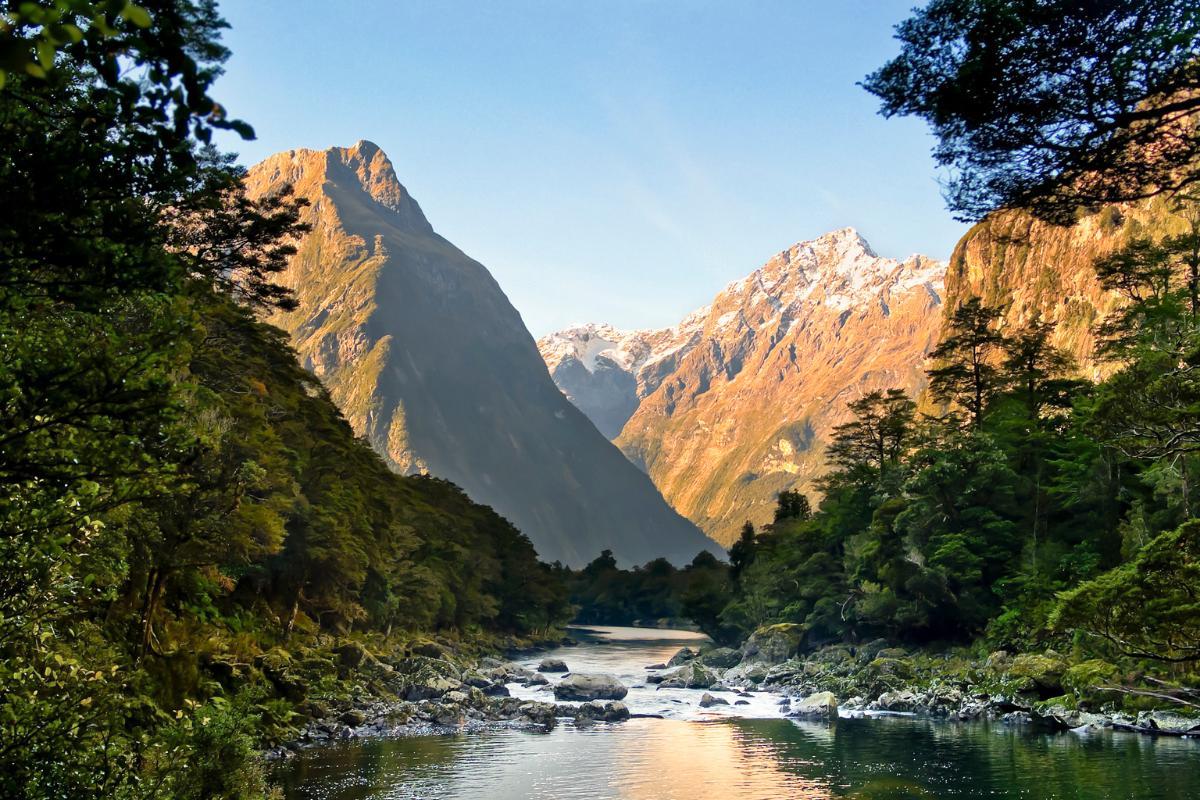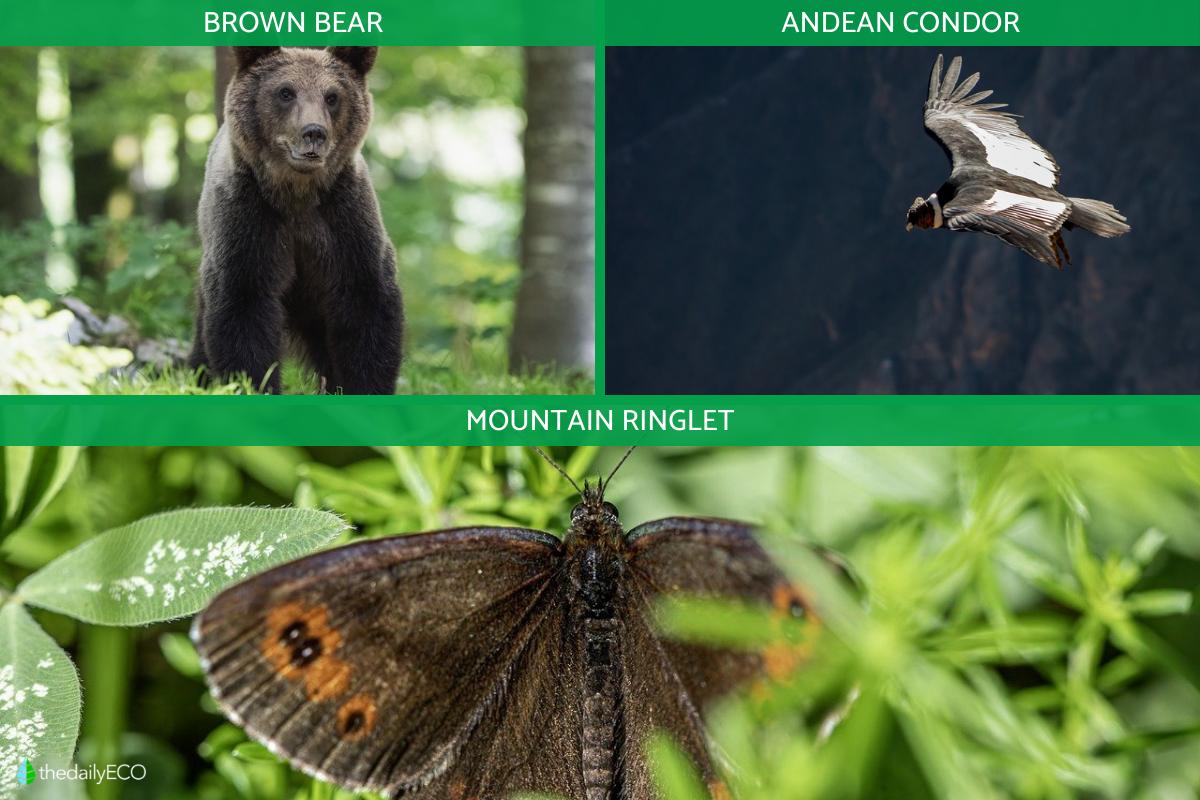What is a Mountain Climate?


A mountain climate is the localized climate of a mountainous area. Due to the greater altitude, the atmospheric conditions are altered, resulting in lower temperatures and significant climate variability. Temperature and precipitation patterns change significantly at different altitudes. For this reason, only certain species of animal or plant can live in these high-elevation regions. Not all mountain climates are the same, so different mountain regions will have different types of mountain climate.
At thedailyECO, we ask what is a mountain climate? In addition to providing a definition, we look at the characteristics and types of mountain region climate, as well as the flora and fauna which can survive in these high-altitude environments.
What is mountain climate?
An exact definition of mountain climate is difficult to provide since different researchers use their own parameters. Generally speaking, an alpine climate is a type of climate characteristic of high-altitude regions, specifically above the tree line. This is the uppermost area where trees can survive. Above this level, the temperature is too cold for this to occur. However, mountain climate can generally be applied to various climate types in mountainous regions.
Some definitions make a distinction between different mountain climates. One is according to a scale known as the Holdridge life zone system, whereby other factors such as biotemperature and precipitation determine the classification. In this case, biotemperature can differentiate between mountain region climates known as alpine or alvar climates due to differences in biotemnperature. We will look at the other criteria for types of mountain climate below.
Regardless of the definition of mountain climate, it refers to a type of climate with certain general characteristics. It is mainly distinguished by low temperatures and climatic variability, both able to change dramatically in short periods of time. As one ascends in altitude, the temperature decreases at a rate of approximately 6.5ºC for every 1,000 meters. This is known as the vertical temperature gradient.
The mountain climate has a significant impact on biodiversity and the lives of people who live in these areas. Both flora and fauna require significant adaptations to be able to survive in such harsh climates. These also affect human activities such as agriculture and tourism.
Learn more about these regions with our article on how are mountains formed?

Characteristics of mountain climate
Despite variations in definition, the mountain climate has several distinctive characteristics that differentiate it from other types of climates. They include the following:
Low temperatures and thermal variability
One of the most notable characteristics of the mountain climate is the low temperature, which decreases as you rise in altitude. This creates a cool or cold environment for most of the year, especially in the highest areas.
Mixed rainfall
The amount and type of precipitation in mountainous areas depends on the altitude and orientation of the mountain. The windward side is the part of the mountain facing moist winds. These areas typically receive more precipitation in the form of rain or snow. Leeward areas are those protected from the wind and which tend to be drier.
Presence of microclimates
Due to the complexity of mountainous terrain, mountains are home to a variety of microclimates. These are small climate systems that develop in limited areas due to factors such as aspect, slope and altitude.
Seasons of the year
In the mountains, the seasons of the year are usually very well defined, although they vary in duration and intensity depending on the altitude. Winters are usually long and cold, with abundant snowfall. Summers are shorter and cooler.
Strong winds
Mountains are often areas of strong winds due to the rugged topography that disrupts normal air circulation patterns. These winds can be constant and cold, especially on peaks and ridges. This can dramatically increase the perceived wind chill.
Discover more about the different types of climate in our world with our related guide.
Types of mountain climates
As we have already explained, a mountain climate is a general term for various climate types in mountainous regions. For this reason, it is helpful to look at some of the specific types of mountain climate below:
- Alpine climate: the alpine climate is found in high mountains, usually above the tree line. It is characterized by cold temperatures year-round. This results in long, snowy winters and short, cool summers. Vegetation is sparse, limited to grasses and alpine plants adapted to cold temperatures and rocky soil.
- Humid mountain climate: this climate is found in mountains located in tropical and subtropical regions, where humidity is high. Temperatures are milder compared to alpine climates, but precipitation is abundant throughout the year with frequent rain and fog.
- Mediterranean mountain climate: in mountainous regions close to the Mediterranean areas, the Mediterranean mountain climate is characterized by cool, humid winters and dry, warm summers. Discover more about this type of climate with our article asking what is a chaparral biome?
- Desert mountain climate: this climate is found in mountains that are located in desert or semi-arid regions. Despite the altitude, temperatures can be quite high during the day. Nights are cold due to thermal radiation. Precipitation is very low and vegetation is sparse. Life is adapted to dryness and large daily temperature variations.
- Tropical mountain climate: this climate is found in mountains located in tropical regions, such as the equatorial Andes or the mountains of East Africa. Temperatures are relatively constant throughout the year, with a more pronounced daily thermal range than the annual one.
Flora of the mountain climate
As we have explained, the high altitudes and low temperatures means the plant life in mountain climates is limited. Only plants with very specific adaptations can survive there:
- Adaptations: the flora of mountain climates is diverse and adapted to the extreme conditions of altitude, low temperatures and climatic variability. Depending on the altitude and the specific type of mountain climate, plants develop a number of adaptations to survive and thrive in an environment that can be hostile to other life forms.
- Forests: in the lower parts of the mountains temperatures are moderate and precipitation is more abundant. This means dense forests can be found. These forests can vary from coniferous forests to temperate and tropical forests, depending on the geographic region. No type of forest can be found in an alpine climate since by definition it exists above the tree line.
- Temperate and cold climates: in areas such as the Alps or the Rocky Mountains, coniferous forests predominate. These are types of tree species such as pines, firs and cedars. These plants are adapted to the cold thanks to needle-shaped leaves that minimize water loss and withstand winter conditions.
- Tropical mountains: cloud forests are found in areas such as the Andes or the mountains of East Africa. Cloud forests are perpetually shrouded in mist and have high humidity. The vegetation is very dense with tall trees covered in mosses, ferns and epiphytes such as orchids and bromeliads.
- Alpine climates: conditions are harsher above the tree line where alpine meadows and grasslands become the dominant vegetation type. In alpine regions, grasses and oxbows are common.
- Higher altitudes: the climate resembles the Arctic tundra, so vegetation is reduced to mosses, lichens and small herbaceous plants that can withstand extremely cold temperatures and strong winds.

Fauna of the mountain climate
The range of animals that can survive the mountain climate is equally diverse and specialized. The following fauna of mountain climates are able to adapt to extreme conditions of high altitude, low temperatures and climatic variability:
- Mammals: mountain mammals have developed a variety of adaptations to survive in cold climates and at high altitudes. Many species have thick, insulating fur that helps them maintain body heat in extremely low temperatures. Fur can also change color seasonally, providing camouflage in the winter snow. Some animals have metabolic adaptations that allow them to store fat during warmer seasons and hibernate during the winter, reducing their metabolic activity to conserve energy. Examples include bears, marmots, foxes, lynxes, and some species of deer.
- Birds: bird species able to survive these altitudes include the Andean condor and the golden eagle. Both have large, powerful wings that allow them to glide on rising air currents at high altitudes. These large predators take advantage of mountainous conditions to hunt from the air, with their keen eyesight allowing them to spot prey at long distances.
- Insects: some insects have developed glycoproteins in their blood that act as antifreeze, allowing them to survive in sub-zero temperatures. These include such species of certain beetles and butterflies.
- Larvae: another example is that caterpillars of moths that live in alpine mountains can spend several years in the larval stage, resisting the cold until conditions are suitable for them to complete their development.
You can discover the flora and fauna of a specific mountain climate with our article on Andean plants and animals.

If you want to read similar articles to What is a Mountain Climate?, we recommend you visit our Environment (other) category.
- Mountain climate and landscape. PNTIC. INTEF. National Institute of Educational Technologies and Teacher Training. Ministry of Education, Training and Sport. Government of Spain.
http://descargas.pntic.mec.es/recursos_educativos/It_didac/Geo_Hist_ESO/1/06/47_de_montaa/index.html - 7.1 Climatic, geomorphological and human characterization of mountain environments. (2017) Open Course Ware.
https://ocw.unican.es/mod/page/view.php?id=672








